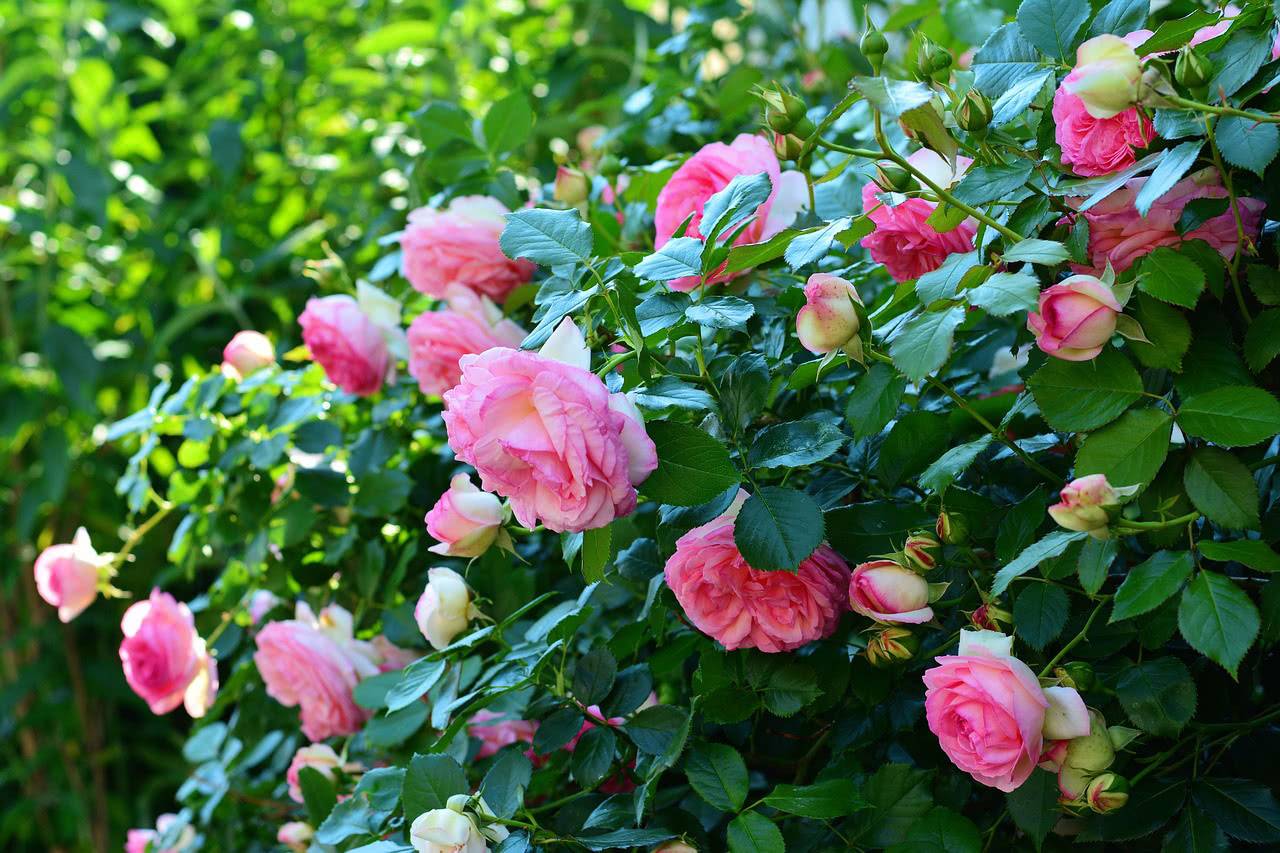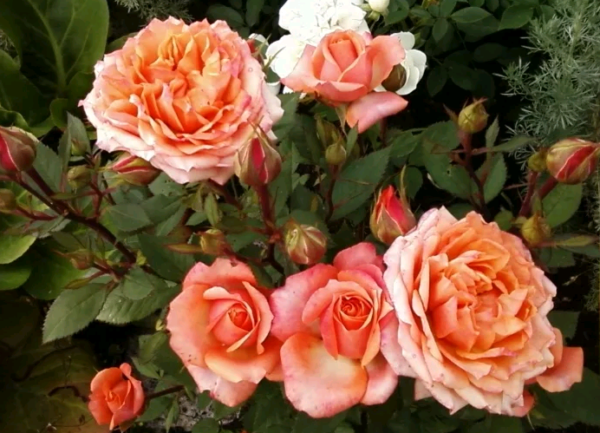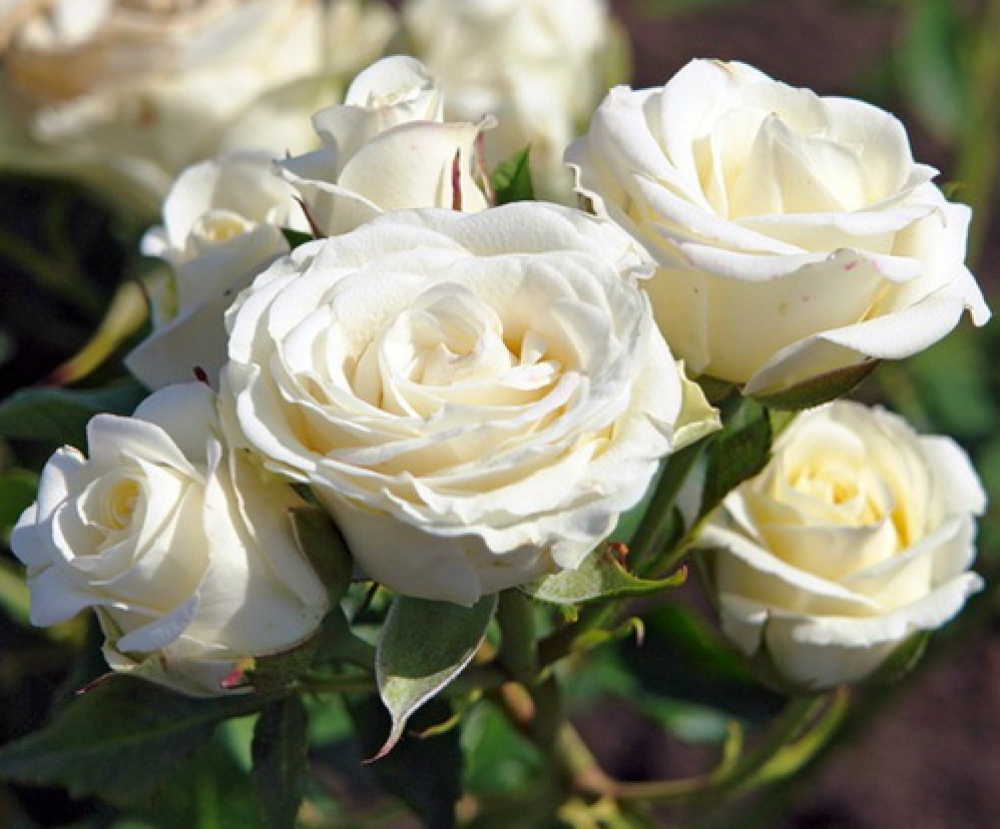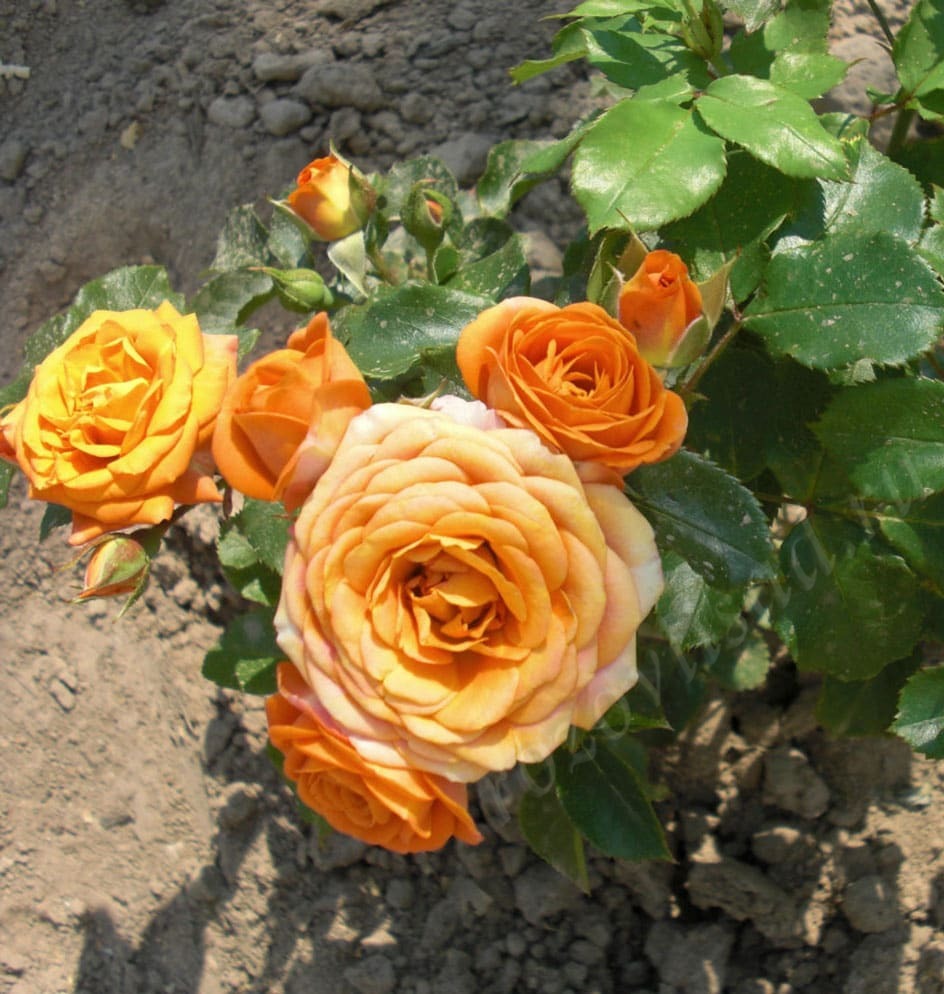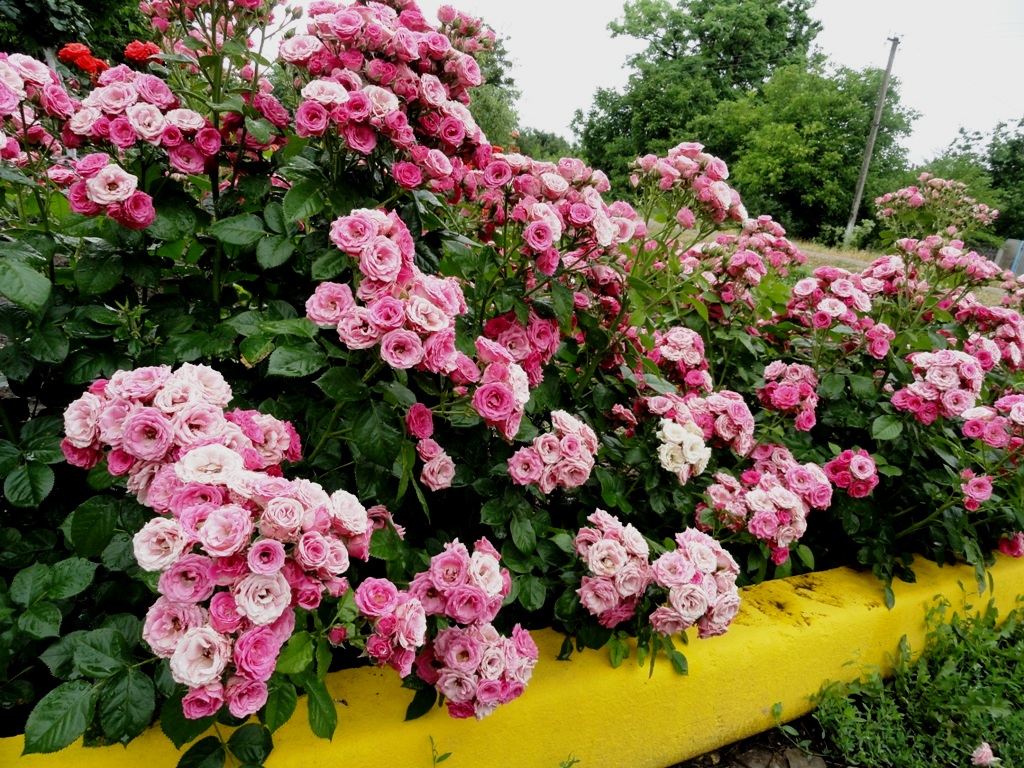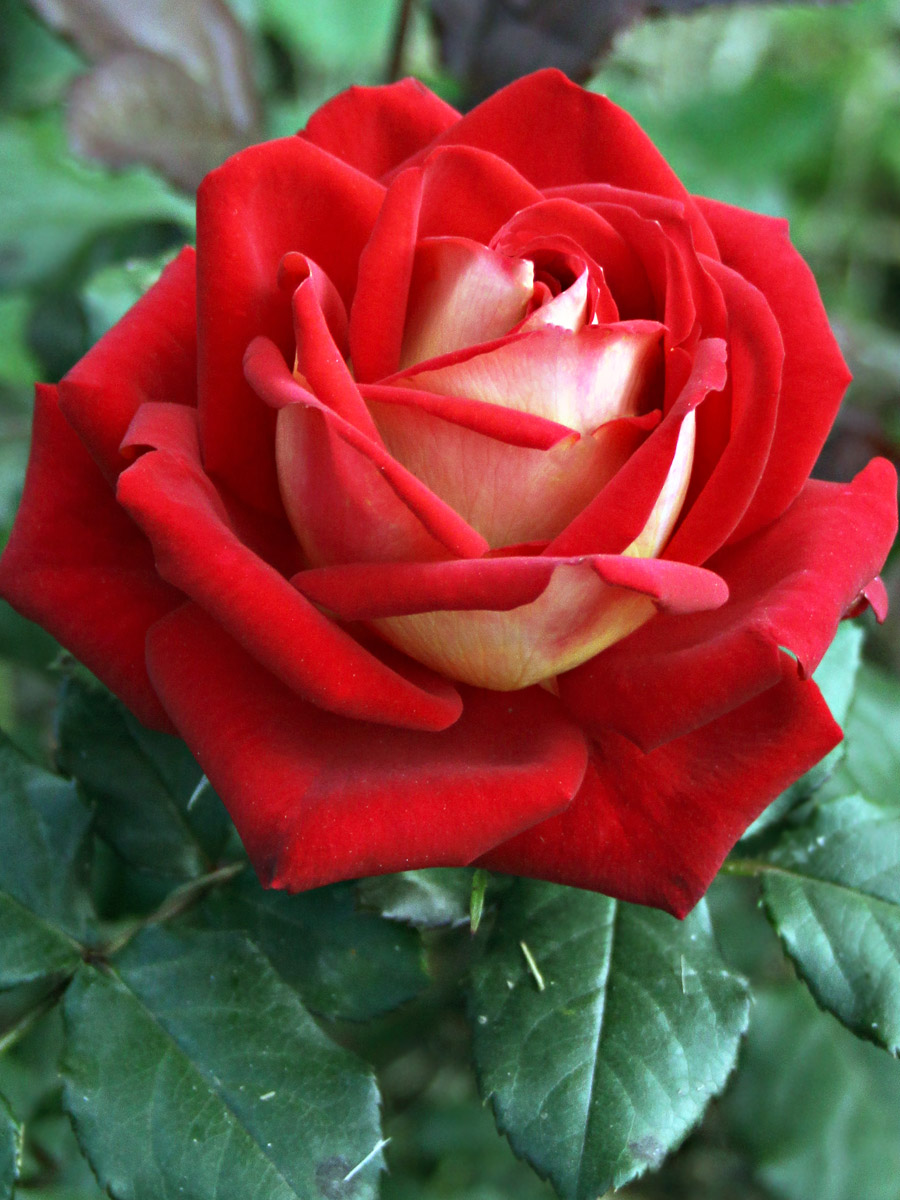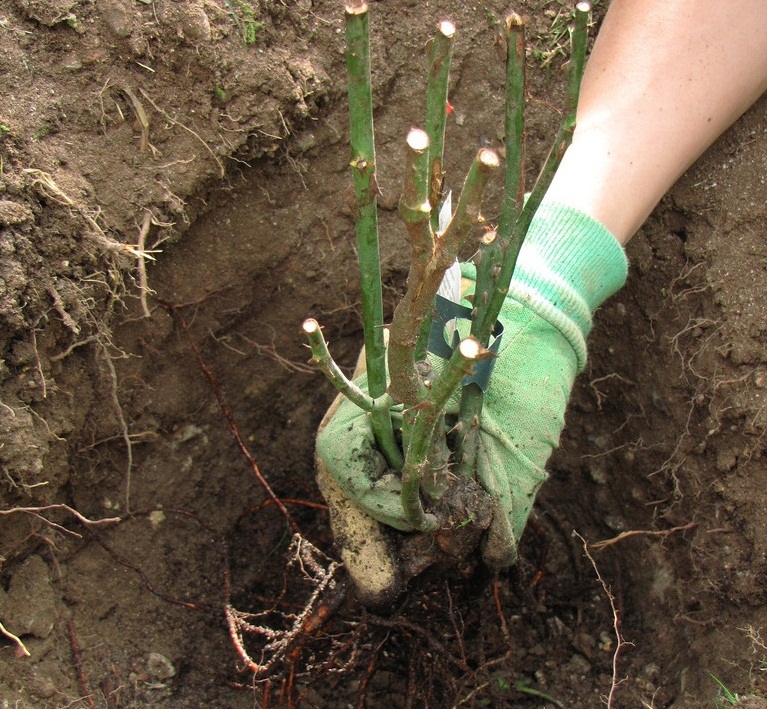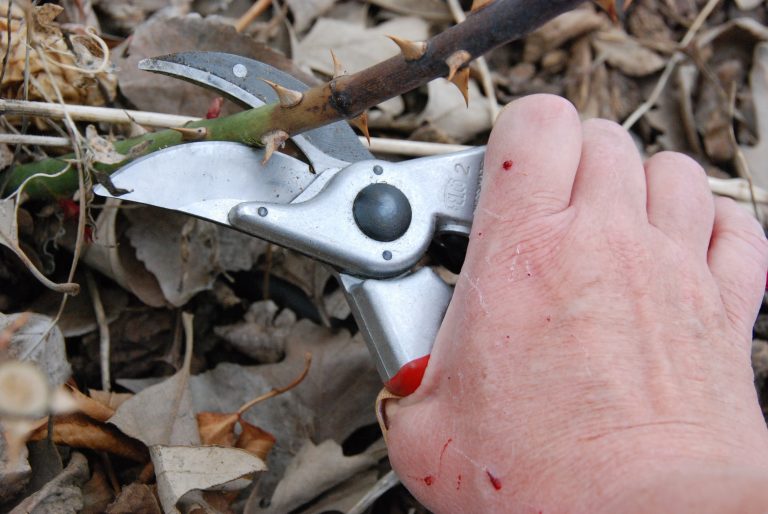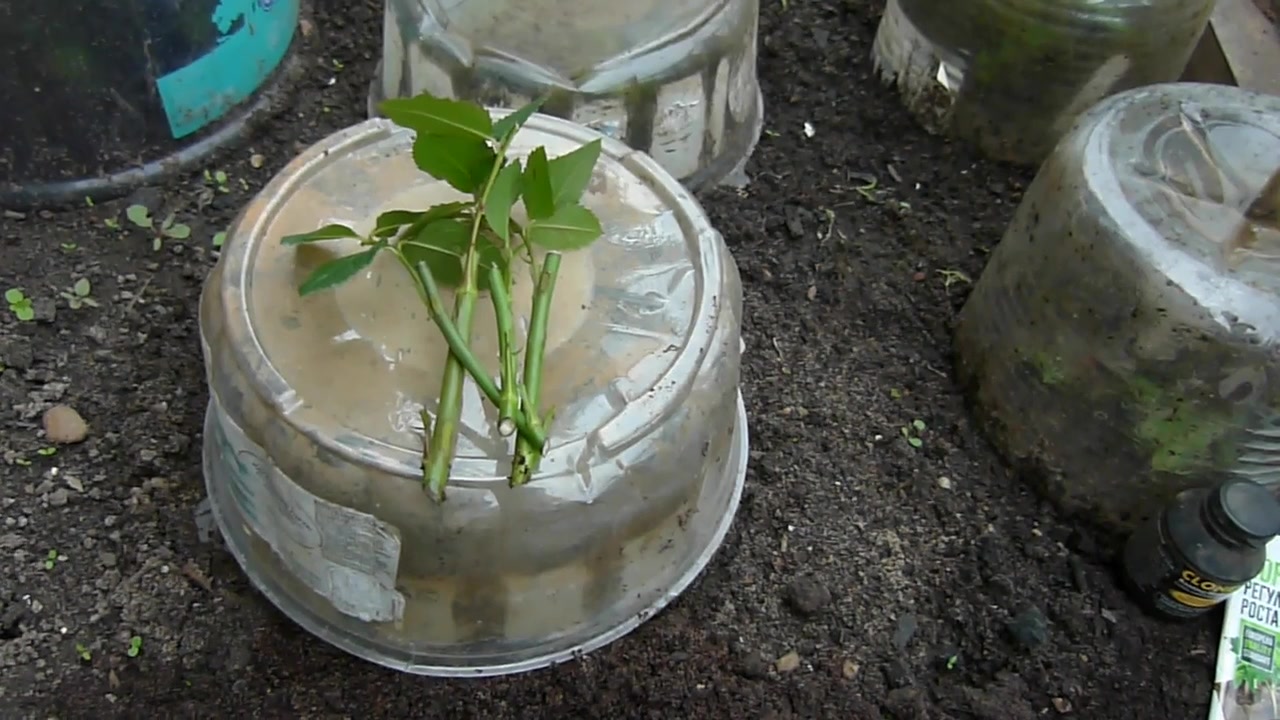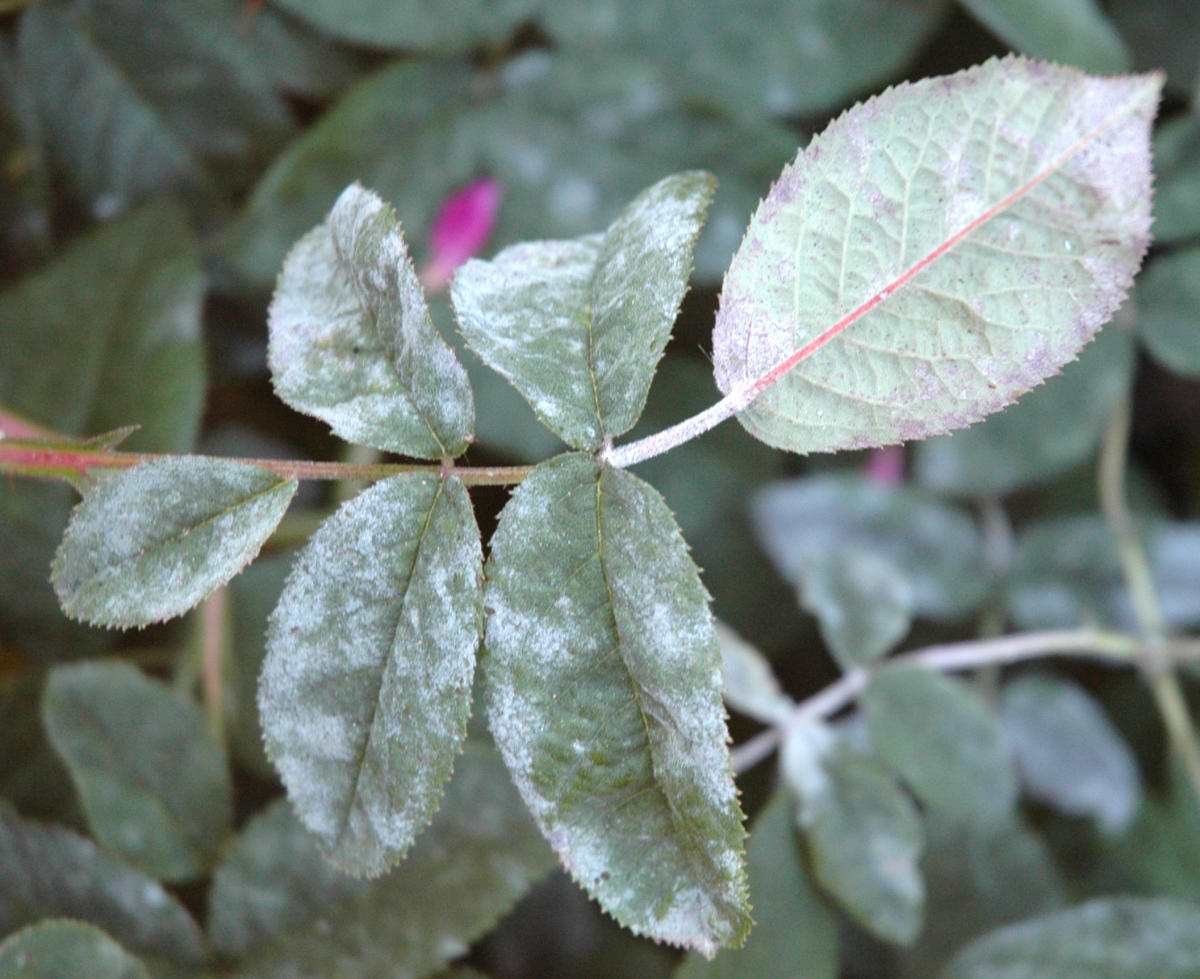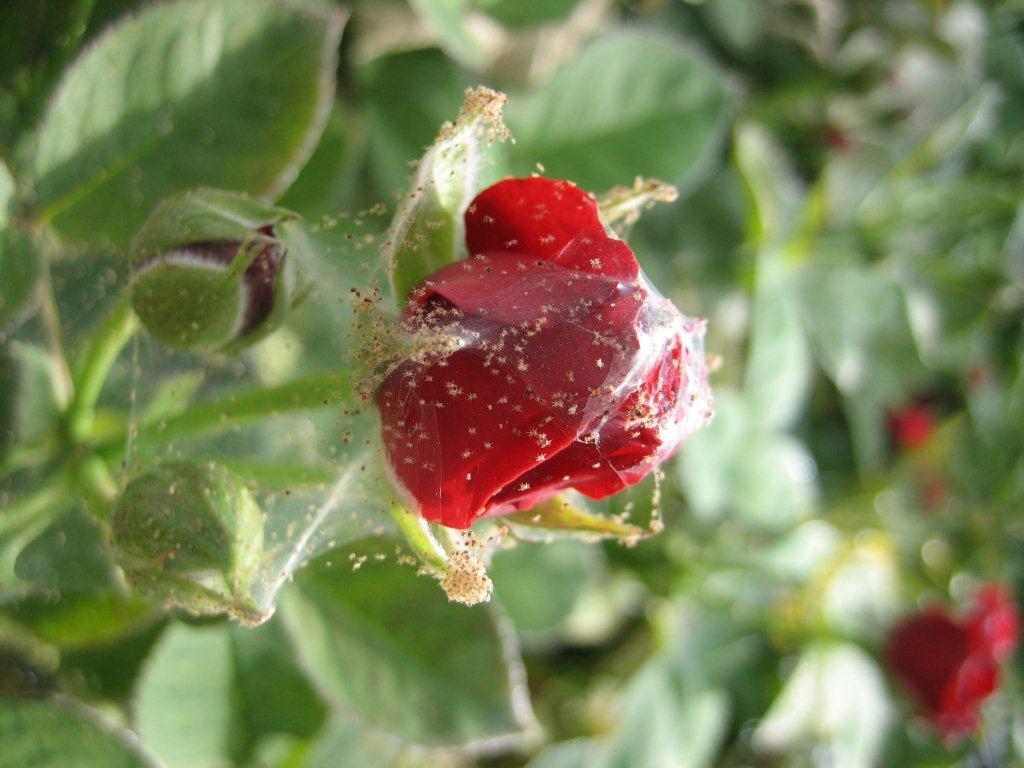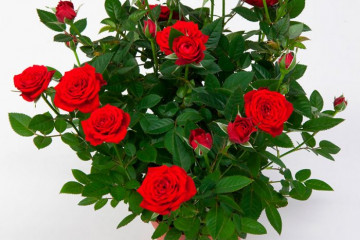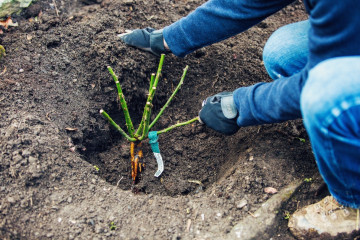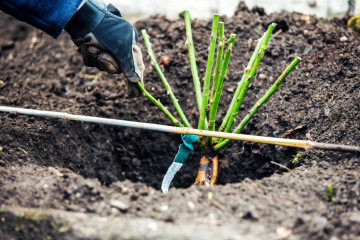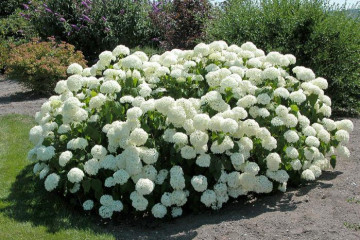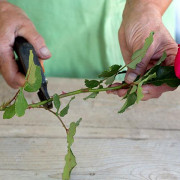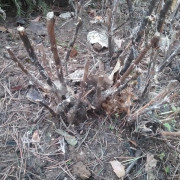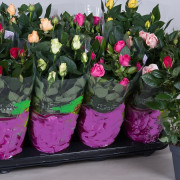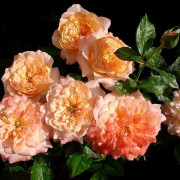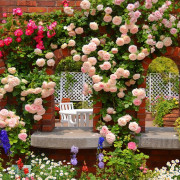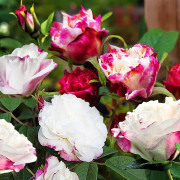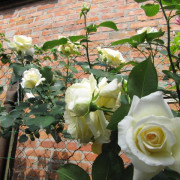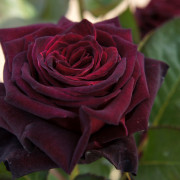Curb roses - what is this variety
Content:
Roses are one of the most beautiful plants according to many gardeners. This is why they are so popular when it comes to landscaping. Often, in people's gardens, you can find precisely curb roses, exquisitely framing plantings.
What are curb roses
Border roses are a type of shrub that is used to create a floral frame in a landscape, which is why they are named. They are distinguished by a long period of beautiful flowering, which is why they found their purpose in decorating the territory.
Border roses are flowers, care and cultivation of which are not difficult. After planting, they usually quickly take root in a new place, delighting the owners of the site for a long time.
Shrubs cope well with temperature drops.
Benefits of curb roses for use in landscape design
Border rose bushes are undersized or medium-sized - their height does not exceed 60 - 65 cm, which is why they favorably emphasize the edges in small areas.
The flower petals have a terry base, and the buds can be completely different colors: from white to yellow. Flowers go well with other plants of various types and varieties.
Popular varieties of border roses for open ground
There is a wide variety of curb rose cuts on the market. However, there are varieties that garden design specialists give particular preference to.
Eleanor
Rose shrubs of the Eleanor variety are erect plants, whose height reaches 35 - 45 cm. Due to the compactness of the border roses of this variety, they can also be grown in a pot at home.
The petals are pink-orange, coral, terry. The inflorescences can contain 15 flowers.
White bouquet
This variety can reach the maximum height for border roses - 60 - 65 cm. The shrub grows very sprawling.
White or milky petals are harmoniously framed by green foliage with a terry surface. The plant has good resistance to various diseases.
Meidy
Meidi conquered many gardeners with her bright blood-red color. The petals on the back are silvery-white.
Pink shrubs are densely covered with leaves of a dark green tone. Flowering continues until the onset of the first cold weather.
Clementine
Clementine flowers of a light apricot shade with a double surface of the petals. The height of the bush usually does not exceed 50 cm.
The glossy foliage is bright green. Additional attention should be paid to formative shrub pruning, which enhances the plant's ability to bloom.
Lydia
Lydia has a delicate pink color of petals. The height of the bush can reach a maximum height of 60 - 65 cm for the curb.
Flowering takes place profusely and for a long time, practically without interruption. Resistant to pest attacks and medium-level diseases.
Debut
The flower petals of the Debut variety are colored in dark red shades. These shrubs are highly resistant to cold and insect pests and diseases. Plants can be called truly dwarf, since its height rarely exceeds 40 cm.
Growing border roses
In order for the plant to please the gardener with a beautiful flowering, it is necessary to pay a lot of attention to its correct planting. For this, it is worth adhering to some rules during the disembarkation process.
Planting with seedlings is considered the most common. It is better to give preference to such planting material, which has a strong root system without damage, with a light yellow cut and at least 2 lignified shoots. The nature of the root system does not affect the quality of the seedling.
You need to plant a plant at such a time so that it has time to take root and get stronger. In the southern regions, landing can be carried out in the fall, and in the northern or middle latitudes, it is worth waiting for the spring period. This will help the shrubs to avoid the threat of frost and promote the rooting of the plant.
Location selection
For low-growing varieties of roses for the border, it is worth choosing a place where there are no drafts or strong winds that would prevent moisture absorption.
In addition, rose bushes should be in a well-lit place so that their decorative effect does not suffer from a lack of sunlight. In this case, the rays should not fall in a straight line. The place where other representatives of the Rosaceae family previously grew is not suitable for planting.
Border roses are not demanding on the soil. For such plants, it is enough to choose not swampy, not too dense or heavy and not dry soil. Loam is perfect.
How to prepare the soil and flower for planting
Before planting curb roses, the soil is dug up and enriched with manure, humus or a mixture of peat and manure with a calculation of up to 20 kg per 1 m² of territory.
The shoots of the bush should be cut into 3 - 4 buds. The roots are also shortened to 25 - 30 cm. After that, the seedlings are immersed in a mixture of clay, manure and water in a ratio of 3: 3: 10 with the addition of root growth stimulants, if necessary.
Planting procedure step by step
The description of the planting process is as follows:
- It is worth digging a hole of such a size that the root system lies freely in the depression. A depth of 40 cm and a diameter of 30 cm is usually sufficient.
- A shrub is placed in the hole so that the grafting site is above the soil surface, and the root collar deepens by 4 cm.The roots are straightened.
- The rose is covered with earth, gently compacting it.
- After watering and laying a layer of mulch. If necessary, organize a shelter against frost in the spring.
Plant care
Even a beginner in gardening knows that growing roses requires adherence to certain rules for caring for them. Border roses are classified as unpretentious bushes, but they cannot be left completely unattended.
Watering rules and humidity
Watering low-growing curb roses should be frequent and regular, but not plentiful. The best time for irrigation is evening.
For the irrigation process, it is worth using water that has been settled in the sun. In addition, the liquid must be poured under the root of the bush so as not to wet the aerial part of the rose, which is dangerous for it.
Top dressing and soil quality
Timely feeding is important for rose bushes.
In spring and autumn, compost is applied to the soil in such a way that about 5 kg of fertilizer per 1 m².
In addition, every 20 days, you can feed the curb shrubs with mineral fertilizers, herbal infusions or mullein.
Trimming and shaping
The pruning process is also an important part of curb rose care.
Damaged shoots are cut from the top between 2 - 3 leaves.
At the beginning of growing a rose, you should ensure the formation of the correct shrub shape. To do this, pinch the shoots after 4 - 6 leaves, as well as remove the buds. In middle-aged bushes, the lateral stems are shortened.
Before wintering, the length of the overgrown branches is reduced and the buds that did not have time to form and bloom are cut off.
It is customary to transplant in early spring or autumn, because there is a possibility that the plant will not have time to take root. In this case, it is also worth pruning shoots up to 45 - 50 cm, the old stems are removed altogether.
Features of wintering a flower
Before preparing the plant for winter, it must be rid of old stems and foliage. The shelter is carried out at the risk of severe frosts, focusing on the resistance of a particular variety.
In the beginning, it is necessary to spud no more than 15 - 20 cm. After that, branches of coniferous trees, spruce or pine are laid out around the flower, and the shoots are pressed to the prepared surface. Then the shelter is covered with dry foliage.
They begin to remove the shelter during the March thaw.
Flowering border roses
Blooming border roses is a mesmerizing moment that will certainly delight the owner of the site. In order for the plant to bloom profusely in the following seasons, proper care is required during and after flowering, which includes regular watering and feeding.
Ideal watering - applying 5 - 15 liters of liquid under a rose bush 1 - 3 times in 7 days in the morning or in the evening. The water should be settled, heated in the sun.
Good results are obtained by using a complex fertilizer - 1 liter of mullein per bucket of liquid. When the first buds appear in the morning or evening, you can also feed. To do this, use calcium nitrate with the calculation of 1 tbsp. l. on a bucket of liquid.
To facilitate the growth and flowering of the curb rose, its shoots are pruned during the season. The branches are cut in a place that is 5-10 ml above the healthy kidney. This type of pruning can be done throughout the flowering time.
What to do if it does not bloom, possible reasons
There are many reasons for the lack of flowering. The main ones include:
- the bush was planted recently - in the first year of cultivation, the border rose may not have time to ripen before the flowering process, which is considered normal;
- the wrong place for growing was chosen - due to their origin, border roses are thermophilic and like open places without drafts;
- improper care of the plant is carried out - with excessive pruning, as well as insufficient feeding, the rose may also not bloom, therefore it is necessary to care for the border rose in accordance with all the rules;
- the shrub was planted a very long time ago - old wood does not conduct nutrients well, which may cause difficulties during the flowering process, therefore, when pruning, it is worth removing aged stems;
- there is a bacterial burn that can occur after an unsuccessful wintering - the affected plant should be removed.
Reproduction of the border variety of rose bushes
Various methods can be used to propagate roses for a border.The most effective gardeners consider cuttings, propagation with the help of seedlings and seeds.
By cuttings
Cuttings begin to be carried out after the first mild frosts. Usually this time coincides with the beginning of the last autumn month.
With this method, healthy stems should be selected, with a cut thickness of about 5 mm and on which there are 3 to 5 buds. These shoots are cut so that the top cut is at right angles and the bottom cut obliquely.
Next, the planting material is treated with a root former. Prepared pits with a depth of about 30 - 35 cm are filled with grass and compost. The cuttings are placed in a depression at an angle of 45 °, while leaving 1 - 2 buds above the surface of the soil.
At the end of reproduction, cuttings are watered abundantly. For the winter, future bushes are covered with jars with holes, covered with foliage and covered with non-woven material.
Saplings
Propagation of roses by seedlings repeats the process of planting them. So that the plant does not upset during cultivation, it is worth picking up bushes with a developed and healthy root system.
Also, a lot of attention must be paid to the choice of the landing site - it must be well lit, but at the same time not be under the influence of direct sunlight, drafts and strong winds.
Seeds
Seed propagation is carried out before the onset of the first cold weather. Seeds can be obtained in two ways: by purchasing from the appropriate store, or by self-picking.
When buying seeds, there can be a lot of difficulties associated with the quality of planting material. Therefore, most gardeners prefer self-picking, which is usually done at the end of summer. The fruits are removed even before they are fully ripe, until the seed coat has hardened, cut and separate the seeds from the soft part.
Next, the seeds are planted in the ground: compost and peat are placed in the beds, making furrows 1.5 cm deep, the planting material is treated with a growth stimulator and sown every 10 cm. Crops should be mulched and covered with hay, covering cloth or leaves. In April, the first shoots should appear when the cover is removed.
Diseases, pests and ways to control them
The most common diseases of curb shrubs are:
- Black spot - the foliage of the bush is covered with spots of a black and brown hue, from which the use of fungicides and the removal of infected areas of the plant will save.
- Powdery mildew is a fungal disease that manifests itself in the form of grayish spots of a powdery structure and against which fungicides are used.
- Rust is a disease in which brick-colored growths appear on the foliage and shoot. There is a rapid weakening of the leaves and their tarnishing. The plant is treated by spraying with Topaz, Bordeaux mixture or copper sulfate solution.
Border roses can be attacked by the following pests:
- spider mite - the foliage becomes lighter, from the lower side the insect weaves a web, acaricides are used against such a pest;
- green rose aphid - green insects that feed on the sap of plant foliage and against which it is necessary to clean and spray with insecticides;
- rose leaf roll - a pest that eats bush leaves, you can defeat Aktara;
- rose leafhopper is an insect that eats the pulp of foliage and lays larvae in the inner part of the shoot; when this pest attacks, yellowing of the leaves is observed, their drying or falling off, Aktar is used.
Border roses are a great option for framing plantings. They are easy to grow both outdoors and in a pot. They are considered unpretentious plants, which nevertheless delight gardeners with their beauty during flowering, and this has earned the love of a considerable number of people.
